Spotlight
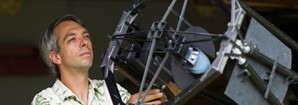
MacArthur Fellows Speaker Series: Olivier Guyon
Dr. Olivier Guyon, Department of Astronomy and College of Optical Sciences, MacArthur Fellow Class of 2012, will speak Feb 26 at the MacArthur Fellows Speaker Series.
The UA Graduate Center is proud to present the MacArthur Fellows Speaker Series. The University of Arizona is home to several recipients of the prestigious MacArthur Fellowship, an initiative of the MacArthur Foundation, which awards individuals that exemplify exceptional creativity, significant accomplishment, and boundless potential. From neuroscience and astronomy to linguistics, ethnobotany, and anthropology, the UA’s MacArthur Fellows are changing the world for the better. This speaker series explores and celebrates the innovation and impact of our MacArthur Fellows’ work.
Location: Cesar E. Chavez Building, Room 111, 1110 E James E Rogers Way
When: February 26
Time: 5:30 - 6:30 PM
Free and open to the public. Light refreshments and hors d'oeuvres will be served.
Title: Observing Exoplanets and Looking for Life around other Stars
Abstract: The first exoplanet around a Sun-like stars was identified 20yr ago, and we are now finding exoplanets at an accelerating pace thanks to recent technological advances. In the last years, astronomers have found that potentially habitable planets (rocky planets about as massive as Earth, located at the right distance from their host star to sustain liquid water) are abundant, with one such planet around 10% to 50% of stars. Finding and studying habitable planets around nearby stars is a formidable challenge, but is rapidly becoming possible, with both space-based telescopes free of atmospheric disturbances and the upcoming generation of extremely large telescopes on the ground. To directly image and study habitable planets around nearby stars requires exotic optical systems, tuned to reject the bright starlight to observe a planet millions to billions times fainter. I will show how such systems are using new optics tricks, and are now coming online. I will also briefly introduce project PANOPTES, a citizen science effort to crowdsource exoplanet finding using a network of small robotic wide field cameras. Project PANOPTES, soon to be launched, will enable schools, amateur astronomers and citizen scientists to discover with small cameras exoplanets that will then be studied with the largest space and ground telescopes.
Photo: MacArthur Foundation
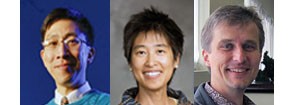
Former Stewardites as AAS Councilors and Officers
Two former Stewardites, Charles Liu (PhD 1996) and Sally Oey (PhD 1995), and current NOAO staff member Knut Olsen, were elected to American Astronomical Society positions: Sally is a Councilor, Charles is Education Officer, and Knut is on the Nominating Committee. For more information, see HERE.
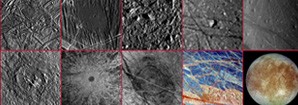
Thoughts on Going to Europa
THIS article contains a variety of thoughts by Chris Impey on how one might fund a serious mission to Europa. The obvious way, proposing to NASA, is underway, and some LPL folks discuss the new call for proposals HERE. The spaceflightinsider article linked above contains some other thoughts and ideas, namely, private funding.
Photo credit: NASA/JPL
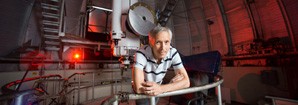
Learning how to Teach a MOOC: A Conversation with University Distinguished Professor Chris Impey
Chris Impey's next Massive Online Open Course is set to begin Feb 15. An article and a Q&A with Chris can be found HERE. While Chris's first MOOC continues, this one has tweaks, such as more videos, quizzes, outside activities and peer-reviewed writing. There are two overarching goals: the first is to teach astronomy to those signed up and have them come away with knowledge and ideas of the richness of what we study; the second is to learn how to do a better job teaching these sorts of very different classes. You can also check out this video link from Chris's Facebook page HERE. The website for the course is HERE, and the Coursera link is HERE. Finally, a recent radio interview with Chris can be found HERE.
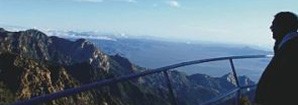
Mexican Science Delegation and UA-Mexico Astronomy Projects
UA News recently reported HERE on a visit by a Mexican Science Delegation. Steward is collaborating on a 6.5m telescope for San Pedro Martir, Baja, Mexico. One possible plan is for that new telescope and the MMT to coordinate/share instruments. An old UANews article can be found HERE.
Photo credit: UANews.
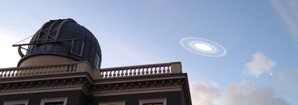
Former Stewardites Find Huge Ring System Around a Stellar Companion
Steward alumni Matt Kenworthy (postdoc and instrument scientist, now at Leiden Observatory), and Eric Mamajek (PhD 2004, now at Rochester) have found observational evidence for the existence of a giant ring system orbiting an unseen brown dwarf star or exoplanet orbiting the star "J1407" (its proper, formal name is 1SWASP J140747.93-394542.6). The evidence comes from an attempt to model the complex changes in brightness of an eclipse lasting 56 days. If this companion/planet and its ring system were placed at Saturn, the rings would be visible to the naked eye here on Earth, and would be many times larger than our full moon. A best estimate for the mass of the rings is approximately 1 Earth mass, about 100000 times more massive than the rings of the planet Saturn. J1407 is a very young star, and this observation teaches us how the gas and dust out of which stars form change with time and as planets or moons form. The photo is an artist's rendering against a venerable Dutch telescope. The CNN article can be found HERE.
The actual scientific preprint can be found HERE.
Photo Credit: Matt Kenworthy
Pages

For Public
Public events include our Monday Night Lecture Series, world-reknowned Astronomy Camp and Mt Lemmon Sky Center.

For Students
A good place to start if you want to become an undergrad major or grad student, or need to find our schedule of classes.

For Scientists
Find telescopes and instruments, telescope time applications, staff and mountain contacts, and faculty and staff scientific interests.




